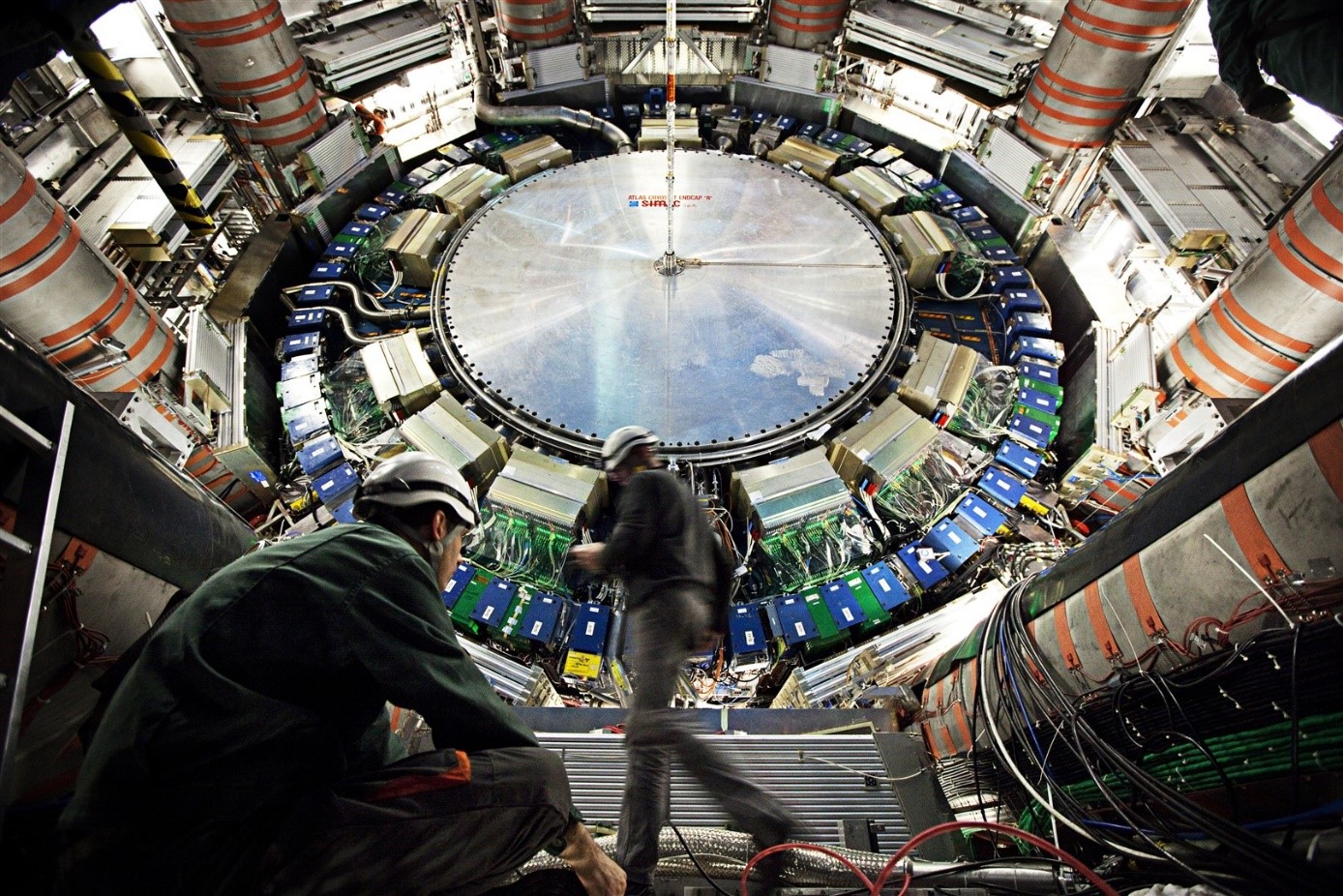KTH physicists among the winners of the Breakthrough Prize

KTH scientists Jonas Strandberg and Christian Ohm are among the group of researchers that have been awarded the prestigious 2025 Breakthrough Prize in Fundamental Physics, as part of the ATLAS collaboration at CERN’s Large Hadron Collider (LHC). The prize was established in 2012 to honour those who have significantly advanced our understanding of the world through their contributions to human knowledge.
Discoveries at the world’s largestscientific instruments
ATLAS is one of the largest and most complex scientific instruments ever built – 40 metres long and 25 metres high. It acts as a kind of super-camera, capturing traces of particles that collide at incredibly high energies. The goal is to explore the fundamental building blocks of the universe and the forces that govern them.
The experiment has led to several major discoveries, most notably the detection of the Higgs boson, an elementary particle that gives other particles mass – a crucial piece in our understanding of the universe. ATLAS has also made precision measurements of the boson’s properties, studied rare processes, and probed the differences between matter and antimatter.
KTH’s Contribution to the International Collaboration
KTH has been part of ATLAS since 1996. Several researchers have contributed to the development of instruments that identify electrons and photons, and have held leadership roles within the scientific governance of the experiment.
Associate professor Jonas Strandberg, together with several PhD students, have contributed substantially to the discovery and the measurements of the Higgs boson’s properties that are directly quoted in the motivation for the prize. In addition, associate professor Christian Ohm who joined KTH in 2017, brought a new line of research with searches for new physics beyond the Standard Model with challenging detector signatures, stretching the capabilities of the ATLAS detector. Both precision measurements and direct searches for new particles can help solve the remaining mysteries in particle physics, such as the nature of dark matter and what processes took place very shortly after the Big Bang.
”CERN is truly unique when it comes to the possibilities it offers for studying how the universe works at the smallest length scales. The world’s leading universities conduct their particle physics research there. This means that our master’s students and doctoral researchers have the opportunity to take part in exploring the fundamental building blocks of everything we see around us,” says Jonas Strandberg.
Looking ahead
ATLAS is now preparing for its next major upgrade – the High-Luminosity LHC – scheduled to begin in 2030. The KTH research group is involved in developing a new type of detector that measures events with picosecond precision. The technology is designed to handle ten times more collisions than today’s system.
“The major challenge over the next five years is to deliver our contribution to the upgrade of the ATLAS detector, which is scheduled for completion in 2030. We are responsible for the readout electronics and data processing for an entirely new ATLAS subdetector composed of highly time-sensitive silicon detectors,” Christian Ohm concludes.
Other KTH researchers who have contributed to the work include Christina Dimitriadi, Alexander Leopold, Rabia Shaheen, Magdalena Vande Voorde, Jelena Jovicevic, Alex Kastanas, Emma Sian Kuwertz, Bengt Lund-Jensen, Olof Lundberg, Anthony Morley, Giulia Ripellino, David Shope, and Edvin Sidebo.
Text: Malin Mörk (
malinmor@kth.se
)
Photo: ATLAS/CERN
